#Giga Pets Explorer
Explore tagged Tumblr posts
Text

Requested by @neoasari
#Giga Pets Explorer#plug and play#giga pets#video games#gaming#video game polls#polls#tumblr polls#adventure#simulation
21 notes
·
View notes
Text

a week late with this stream, but it's finally time for the series finale of the Giga Pets Explorer stream REDUX!
and by that i mean. i'm just gonna play it one more time tonight and then go back to playing normal games next week. lol
twitch_live
3 notes
·
View notes
Text

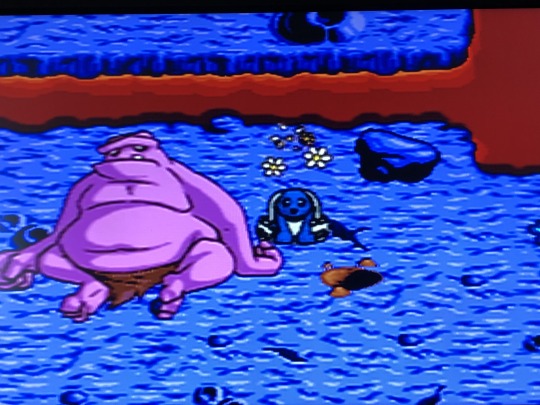

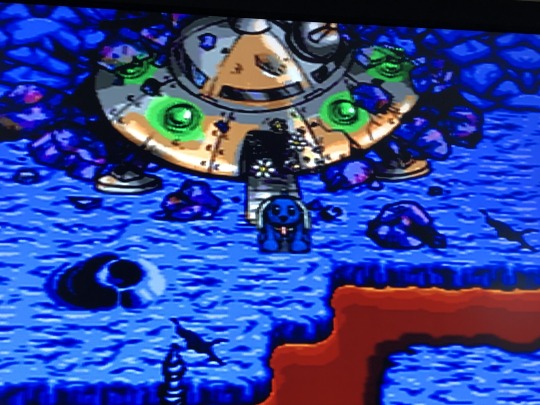

fever dream of a game
6 notes
·
View notes
Text
I was reminded of this thing by @calamitydarcy , a toy I had in my youth
he talked and I used to torture him by pressing his stomach a bunch and making him upset lmao
1997 OddZone e-Baby Bear

edit: I forgot how demanding this fucking thing was
you can hug, kiss/feed, burp, and rub his tummy with buttons inside him and he'd constantly demand hugs, kisses, and tummy rubs
he was so fucking annoying 😭
#apparently he's a type of giga pet??#did not know this as a babe#i used to love the giga pet tv explorer plug and play lmao
3 notes
·
View notes
Note
what would lali's pokemon team be? Would it change over time?
Lali is absolutely a normal type trainer at first, her pokemon choices could be the ancient family pet, like an ancient zigzagoon or a fidough (also ancient) or mudkip (for axolotl related reasons)
she'd definitely go for some sort of plant/mushroom pokemon like a shroomish or shinotic, because of her traditional upbringing she'd have some knowlege of how to use those spores to good effect
afterwards her team would probably be a Mix of Grass and Normal type, lots of food based options too (mushrooms included)
Lali would absolutely wreck Rayquaza with her many spore based tactics, it'd smell like Truffles for days in hoenn
she'd absolutely see Rayquaza as an inspiration to get stronger, seeing it as a symbol of ultimate freedom, maybe seeking them out to test herself
so Im thinking her team would be (incomplete movelist)
An all HM move Swampert with rock smash, dive, surf and waterfall (thats her exploring buddy!!!)
a Breloom with Dynamic Punch and Stun spore for good measure
an Altaria with a fighting type hidden move and dragon breath
a Shiinotic with Confuse Ray and Moonblast
a Brute Bonnet with Sucker Punch and Giga drain
and finally Rayquaza themself all tricked out with Fly/Dragon Claw/Hyperbeam/Dragon Ascent
#i had to think long and hard about if mushrooms are really her thing?#but then i forgot a literal multi year arc she had with mona and her toxic slutch lol#definitely a refrence to the psychedelic therapy used by tons of indigenous communities and maria sabina#thank u cecil!!!!#also wait toedscool
7 notes
·
View notes
Text
Sage & Luci

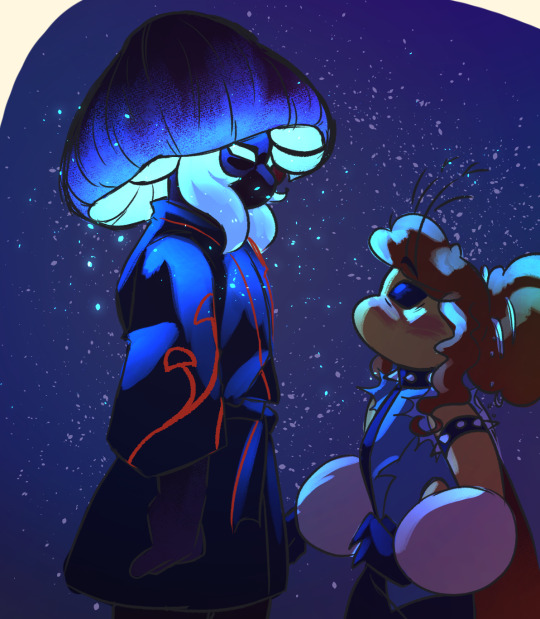
As said before, I want this to be a QPR & I spent a while relearning what I already knew to double check myself lol. I still find these to be so fun because of the flexibility this kind of relationship has & I'm excited to explore it.
Sage is the more physically affectionate out of the two
I just love size differences lol. Luci isn't really one to ramble unless it's to rant, but she does it with Sage. She feels like she can say anything to her & Sage will being paying attention to everything. Sage is quite the bubbly person, but often enjoys listening to people instead of speaking.
Nicknames! Luci doesn't like romantic pet names. She either cringes or feels dead inside when addressed that way. In an ask Helli made to me, I said that Luci likes drinking floral teas & then it came to me; Sage addresses Luci by whatever tea she drinks that day. I thought it was so cute!! Luci would get tea from Bao's tea shop every so often & would probably be where she & Sage meet up. On days that Sage is either late or days Luci comes into the tea shop without planning on meeting up, I think it'd be funny if Sage just bursts into the shop to interrogate Bao on what tea Luci drank that day lmao.
Sage is gloooowing. I just wanted more color on the page lol. But moths are attracted to light, so when Luci learned Sage is bioluminescent, she was beyond excited & thought it was so cool. Seeing the colors & brightness made Luci come up with nicknames for Sage. She calls her a nightlight, at first in a joking manner before it stuck.
I think it'd be best to talk about Luci's view & opinions of romance, and then her & Sage's partnership so imma do that-
I don't believe I've said this fun fact yet, but Luci watches romance shows & movies practically constantly. If someone wants to watch anything romance, Luci will have a recommendation. She started watching romance because of the relationships around her. I think it's not a secret that Luci is friendless & isn't exactly the best at socializing. Her interactions with people or reselling/buying others' stuff, shouting at said customers when they tick her off, or hating people (cough Pico & Todd cough). The only time she gets along with others is during DIGG concerts (another fun fact is that she's a giga fan of them) when jamming out with people in the crowd. So, as said in Luci's introduction post, she meets Bao by going to his tea shop after being extremely heated. Making Bao her first friend. Of course, that leads to her learning Bao & Pico are together. The only other people in a relationship she'd know of would be Warren & Hypno, because of Repo. It'd leave her puzzled on the subject of a lover. She knows people date & get married & all that, but actually knowing people who are is a shock to her. Like knowing something exists but not really registering it until you've seen it in person. While trying to wrap her head around it, she sees a show playing on the TV Repo left on, it being romance. She'd take this as an opportunity to figure this strange concept & it turned into her binging and watching a bunch of them. Through watching romance is how she'd find out things that were cringe or confusing to her, & things that peaked her interest. (I think she'd just ask Bao straight up, "Why the f*ck are you dating?" That'd probably be her reaction to the news lmao in the sense of "Why Pico?" but also just "Why?")
Repo never talked about romance with Luci unless she asked, and with the lack of people she's around, she never dealt with being questioned on her interest in others & having that expectation of needing to find someone. So that kind of relationship has never been on her mind. What she's interested in, from all the shows & films, interactions she's seen, and by pure description has been the intimacy of those close relationships. It's more of a second thought that might appear time to time when watching romance that'd linger. But aside from that, she doesn't care for any of the rest.
Luci is not an affectionately giving partner that likes receiving attention. With the way she's raises & how she views Repo, she always liked getting attention. The way she grew up also made her not the most considerate person in the world unless it was for Repo (later on others), so she isn't the most showy with affection. She shows affection with others, aside from Repo, by just her presence. Even if she just doesn't talk, her being there with someone is her way of showing care. Sage loves expressing her affection through words. She may not talk as much in a conversation, but when giving praise or compliments, those are likely to make that person be in a good mood for the rest of the day. She likes making people feel good, it's a reason she's an herbalist. She manages to say all the right words & takes pride in that. They do standard cuddles & head resting and is pretty much all they do. They like to go on outings, Sage more than Luci, or just sitting around doing nothing. But they do have this thing with holding hands. They hold hands a lot when doing just about anything, but Sage would always reach for Luci's second pair of arms. And that Luci would never be the one to let go of hands, it'd always be Sage who'd have to do it & I just thought it was sweet lol.
okay that's enough rambling for me lol
#luci the moth#sage the mushroom#i believe what I wrote for Luci made sense- or maybe it didn't#this took more than 20 minutes but then again I didn't plan on it#i love their nicknames for each other#you don't even know how long gushed over on it#also Bao inclusion :D didn't think i'd mention him several times but i did lol#imma go draw Sage munching on tree bark lmao#i think they're cute together!#i have ideas in my head but im going to save myself the trouble of trying to do anything else today#march 2024
22 notes
·
View notes
Text


4 moodboard, how we feelin'
(left to right, top to bottom)
black cats (specifically with warm-color eyes)
giga pets explorer
black wolves (specifically with warm-color eyes)
sirin from honkai impact 3rd
blair from soul eater
dorugamon & gabumon from digimon
purrloin, litten, and garchomp from pokemon
ninomae ina'nis from hololive-EN
great white shark from the ocean
sirin from honkai impact 3rd
sharpedo from pokemon
dorumon from digimon
faputa from made in abyss
those sirin pictures are from two particular pages of the webcomic hehe
9 notes
·
View notes
Text
“Arapaima, River Giant” - Painting Post
Original post link / Original post date: October 23 2023
Painting Information:
Annie K. Haddock “Arapaima, River Giant” 2023 (June-September) 24” x 24” Acrylic paint & glitter on stretched canvas.
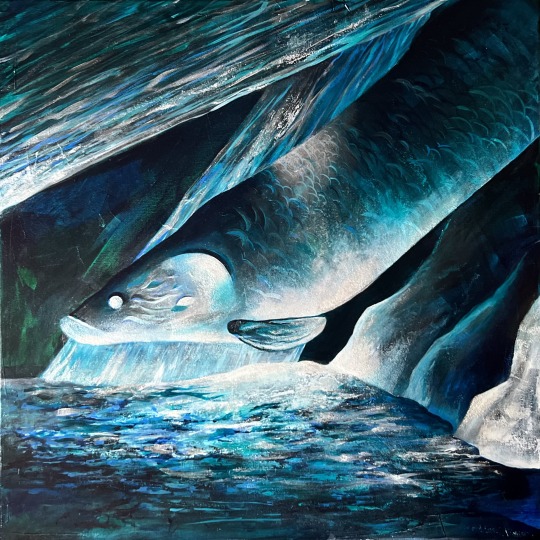
Context, information, and personal thoughts:
Arapaima / Arapaima gigas Size: up to 15 feet Conservation status: Data Deficient Biome: Freshwater / Amazon & Essequibo Rivers
Data is deficient (“Data Deficient”) on their conservation statue while they are listed as “Endangered” according to CITES (Convention on International Trade of Endangered Species). This makes their trade strictly regulated.
They live in the freshwater habitats of the Amazon & Essequibo river systems in northern South America. They have the ability to breathe air, where they can survive 24 hours out of water. They are- strictly speaking- the largest exclusive freshwater fish, meaning only existing in freshwater.
[Personal Thoughts]
I absolutely love freshwater fish. I love them. I love going to aquariums and seeing the light cascade through the water and I have always been enamored with the flow and structure of water. I really love freshwater habitats and learning about them; Oceanography, rightfully, gets a lot of attention in relation to the research and exploration put into it. Personally, I love freshwater systems a tad bit more. If I didn’t have to learn physics, I’d want to pursue a career in freshwater biology. But with what I have and I know I am capable of, I can love it as an amateur and maybe spread some information with my art.
Anyway. I love arapaima’s very much and I find them to be purely gorgeous. Like, they do look weird, but it makes sense. They have what they need to survive and that includes a very snakey body that is resistant to water drag. They’re pure muscle. I love them. They are gorgeous creatures with their vibrant scales and the way they move. They move as though the water isn’t there. They never look as though they are struggling or frantic; they are fluid and look like they’re floating. I would like to pet one. If I was allowed. And the fish was okay with it.
The Tennessee aquarium has some resident arapaima’s and I absolutely love watching them. They are sometimes active, and sometimes they’re relaxing with some sturgeons. They are in the river giants section of the freshwater journey. The Tennessee Aquarium has given me so much inspiration and love for aquatic creatures and biomes, and I’m sure more paintings will come out of my photography from this wonderful aquarium. If nothing else, I can extend their mission with my art.
References:
https://tnaqua.org/animal/arapaima/
https://nationalzoo.si.edu/animals/arapaima
#painting#art#acrylic painting#art blog#traditional art#acrylic on canvas#acrylpainting#acrylic#painter#woman painter#arapaima#fish#fish painting#nature painting#real art#aesthetic painting#aesthetic
4 notes
·
View notes
Text
What if...
What if instead of being a whole-ass arcade cabinet, Kahon was a shitty plug-n-play game, a la Giga Pets Explorer?
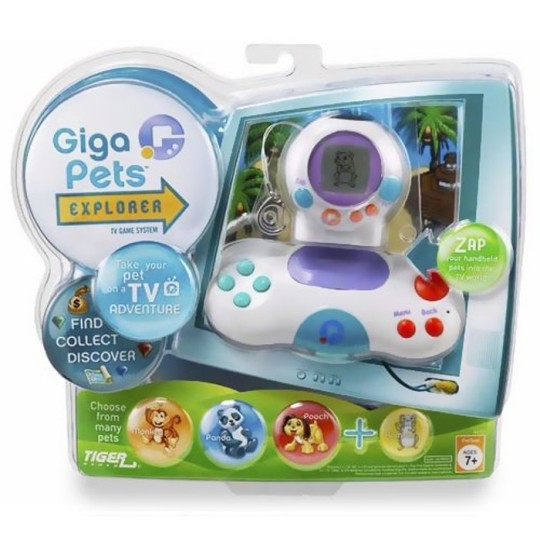
#doing more kun3h0 brainstorming#i really would like to get back to streaming before this year ends#but as always i'm getting caught up in the details#but i do like the new direction#and i still get to keep a lot of the original lore intact#although i am kinda sad to be losing the contrast of#'this cute girl is actually a giant box'#i dunno. i just think that personifying a plug-n-play is a lot less satisfying than a big ol box#it's like 'small cute thing is actually small cute thing' ya know? like what's the point of that?#i like my moe as gapped as possible#granted kahon was supposed to be cute but it was still a giant box at the end of the day#on the OTHER hand this is gonna make the dakimakura gag even funnier#because instead of the giant box that could realistically fit on a pillow that size#it's just gonna be a tiny console on a big-ass pillow#just 90% white space#so there are pros and cons to this new form factor
6 notes
·
View notes
Text
I miss nano. I need to find a way to play giga pets explorer again NOW.
4 notes
·
View notes
Text
10 Fascinating Squid Names: From Giant Architeuthis to Adorable "Squiddlets"
https://goteamnames.com/?p=1771 10 Fascinating Squid Names: From Giant Architeuthis to Adorable "Squiddlets" Diving into the mysterious industry of cephalopods, we’ve discovered that squid names are as fascinating as the creatures themselves. These intelligent ocean dwellers have captured our imagination for centuries, with scientists and sailors alike giving them monikers that range from the scientific to the whimsical. We’ll explore how squid get their names, from the giant Architeuthis dux to the adorable Dumbo octopus (yes, it’s related!). Whether you’re a marine biology enthusiast or simply curious about these remarkable invertebrates, understanding squid nomenclature offers a window into their unique characteristics and the human desire to classify the natural industry. Table of Contents Toggle 10 Most Popular Scientific Names for Squid SpeciesThe Etymology Behind Common Squid NamesOrigins of the Word “Squid”Origins of “Calamari”Cultural Variations in Squid Terminology7 Fascinating Giant Squid Names and Their Meanings1. Architeuthis dux2. Architeuthis japonica3. Architeuthis martensii4. Architeuthis physeteris5. Architeuthis sanctipauli6. Architeuthis stockii7. Architeuthis titanUnique Naming Conventions for Newly Discovered Squid SpeciesHow Scientists Choose Squid NamesRecent Additions to Squid Nomenclature8 Colorful Squid Names Inspired by Physical Characteristics1. Caribbean Reef Squid2. Diamond Squid3. Dwarf Bobtail Squid4. Glitter Squid5. Humboldt Squid6. Pygmy Squid7. Giant Squid8. Flamboyant SquidHistorical Figures Who Have Squid Species Named After ThemPresident Joe Biden – Syllipsimopodi bideniLimited Instances in Scientific Naming5 Adorable Nicknames for Baby Squid in Marine Biology1. Squiddlets2. Ink Dots3. Mini Masters4. Tentacle Tots5. Jumbo JuniorsRegional Variations in Commercial Squid Names Around the WorldNorth Pacific RegionWest Coast of North AmericaSoutheastern United StatesGlobal MarketplacesUS Regulatory RecognitionCreative Squid Names in Popular Culture and FictionLiterature and Film ReferencesMythological ConnectionsMusical InspirationsCommon Naming ThemesHumorous and Whimsical ChoicesHow to Choose the Perfect Name for Your Pet SquidFrequently Asked QuestionsWhat is the scientific name for the giant squid?How do scientists name newly discovered squid species?What is the origin of the word “calamari”?What are some nicknames marine biologists use for baby squid?What’s the most commercially important squid species?Are there squid species named after historical figures?What is the smallest squid species mentioned in the article?How has the “Kraken” influenced squid naming in popular culture? 10 Most Popular Scientific Names for Squid Species Loligo vulgaris is perhaps the most commercially important squid species, commonly known as the European squid. This coastal species inhabits the Mediterranean Sea and eastern Atlantic Ocean, growing up to 30-40 cm in mantle length. Fisheries throughout southern Europe prize these squid for their tender flesh and mild flavor. Architeuthis dux represents the legendary giant squid that has fascinated scientists and the public alike for centuries. These deep-sea giants can reach lengths of up to 13 meters, including their impressively long tentacles. Scientists only captured the first live footage of this elusive creature in its natural habitat in 2012. Dosidicus gigas, the Humboldt or jumbo squid, thrives throughout the eastern Pacific Ocean. These aggressive predators grow up to 1.5 meters long and are nicknamed “red devils” due to their distinctive coloration and hunting behavior. Commercial fisheries in Mexico, Peru, and Chile harvest thousands of tons annually. Todarodes pacificus, known as the Japanese flying squid, supports one of the industry’s largest squid fisheries. These pelagic squid undertake long migrations across the western Pacific Ocean and grow to about 50 cm in mantle length. Japan’s squid fishing industry lands approximately 350,000 tons of this species each year. Sepioteuthis lessoniana, the bigfin reef squid, inhabits shallow tropical waters throughout the Indo-Pacific region. These coastal squid feature distinctive large fins running along their mantle and display remarkable color-changing abilities. Aquaculture operations across Southeast Asia now farm this adaptable species commercially. Illex coindetii, the broadtail shortfin squid, populates the Mediterranean Sea and eastern Atlantic Ocean. These medium-sized squid typically measure 20-25 cm in mantle length and form important components of marine food webs. European trawl fisheries target these abundant cephalopods year-round. Gonatus fabricii dominates the deep waters of the Arctic and North Atlantic. These hardy squid serve as crucial prey for sperm whales, reaching depths exceeding 2,000 meters. Researchers have documented these remarkable creatures caring for their eggs in the deep sea, a rare behavior among squid species. Lolliguncula brevis, the brief squid, prefers coastal habitats along the western Atlantic. These small squid, rarely exceeding 12 cm in length, display unusual tolerance for low-salinity environments. Estuarine ecosystems along the Gulf of Mexico support large populations of this adaptable species. Watasenia scintillans, the firefly squid, produces one of nature’s most spectacular bioluminescent displays. These tiny squid, only 7-8 cm long, possess photophores across their bodies that emit a blue light. Japan’s Toyama Bay hosts an annual phenomenon where millions of these squid approach shore to spawn, creating a magical blue light show. Thysanoteuthis rhombus, the diamond squid, features a distinctive rhomboid-shaped mantle unlike other squid species. These oceanic travelers can reach up to 100 cm in mantle length and form monogamous pairs throughout their lives. Fishermen in Japan’s Okinawa region specifically target these unique squid using specialized methods developed over generations. The Etymology Behind Common Squid Names Ever wondered where the names we use for these fascinating cephalopods come from? Let’s jump into the origins of squid terminology across different languages and cultures. Origins of the Word “Squid” The exact origin of the word “squid” remains somewhat mysterious, with no definitive etymology established. Several theories attempt to explain its linguistic roots. One compelling suggestion links it to sailors’ vocabulary, proposing that “squid” might be a nautical variant of the word “squirt.�� This connection makes logical sense when considering the squid’s remarkable defense mechanism—their ability to rapidly eject both ink and water when threatened. Sailors, who frequently encountered these creatures at sea, likely observed this distinctive squirting behavior and named them accordingly. Origins of “Calamari” “Calamari,” the culinary term widely used for squid dishes, has a more clearly traced etymology. This word originates from Italian, where “calamari” serves as the plural form of “calamaro” (squid). Digging deeper into linguistic history reveals that the Italian term derives from Late Latin “calamarium,” which translates to “ink pot.” The Latin word itself stems from the Greek “kalamos” (κάλαμος), meaning “reed,” “tube,” or “pen.” This fascinating connection reflects the squid’s unique anatomical features—specifically its internal pen-shaped shell and its well-known ability to secrete ink, characteristics that ancient Greeks and Romans evidently found noteworthy. Cultural Variations in Squid Terminology Squid terminology showcases remarkable consistency across many languages, particularly those surrounding the Mediterranean where squid has been a culinary staple for centuries. Italian speakers use “calamari” (plural of “calamaro”), while Greek speakers say “kalamari.” Turkish cuisine references these cephalopods as “kalamar,” and French menus list them as “calmar.” Finnish speakers know them as “kalmari,” and Spanish speakers call them “calamar.” All these variations maintain clear phonetic similarities, demonstrating how the Late Latin “calamarium” and Greek “kalamos” have influenced multiple languages. These linguistic connections highlight squid’s widespread cultural and culinary significance throughout different regions. Scientific terminology provides another linguistic layer, with “Teuthida” serving as the scientific order name for squid and related cephalopods. This term has Greek origins, connecting to ancient words for these sea creatures, further emphasizing humanity’s long-standing relationship with squid across continents and millennia. 7 Fascinating Giant Squid Names and Their Meanings 1. Architeuthis dux Architeuthis dux stands as the most widely recognized giant squid species in the scientific community. The name translates to “most important squid leader,” combining Greek and Latin roots: “arkhi-” (chief or most important), “teuthis” (squid), and “dux” (leader). This majestic name perfectly captures the commanding presence of this legendary deep-sea creature that has fascinated marine biologists for generations. 2. Architeuthis japonica Architeuthis japonica identifies a giant squid species associated with Japanese waters. The species name “japonica” clearly indicates its geographical origin in the waters surrounding Japan. Scientists often use location-based naming conventions to help classify marine organisms according to their natural habitats and distribution patterns. 3. Architeuthis martensii Architeuthis martensii, known as the North Pacific giant squid, honors the German naturalist Eduard von Martens through its name. The patronymic form “martensii” acknowledges von Martens’ contributions to marine biology and cephalopod research. This naming tradition allows scientists to commemorate their colleagues while establishing taxonomic clarity. 4. Architeuthis physeteris Architeuthis physeteris combines “Architeuthis” (chief squid) with “physeteris,” which likely relates to the sperm whale genus “Physeter.” This connection might suggest an ecological relationship between these deep-sea giants or a geographical overlap in their habitats. Sperm whales are known predators of giant squid, making this naming connection particularly important. 5. Architeuthis sanctipauli Architeuthis sanctipauli earns the distinction of being known as the southern giant squid. The “sanctipauli” component of its name potentially references a exact geographical location or a saint, indicating this species’ southern distribution pattern. Naming conventions often help researchers quickly identify where certain species are typically found. 6. Architeuthis stockii Architeuthis stockii features a species name that honors an individual, likely a scientist or researcher involved in its discovery or documentation. The patronymic form “stockii” follows the scientific tradition of recognizing important contributors to taxonomic research. This practice creates a lasting legacy for those who advance our understanding of marine life. 7. Architeuthis titan Architeuthis titan boasts a name that immediately conveys its impressive size. The species name “titan” directly references the enormous dimensions of this giant squid variety. Drawing from mythology, where Titans were primordial deities of extraordinary size and power, this name perfectly captures the awe-inspiring proportions of these elusive deep-sea inhabitants. Unique Naming Conventions for Newly Discovered Squid Species Squid nomenclature follows precise scientific protocols while allowing for creativity and historical recognition. The binomial nomenclature system, developed by Carl Linnaeus, provides the framework for naming all squid species. How Scientists Choose Squid Names Scientists select names for new squid species based on several key factors that help identify and classify these fascinating creatures. Morphological characteristics often influence naming decisions, with distinctive physical features such as color, shape, or size serving as inspiration for a species’ scientific name. Geographical distribution or habitat represents another common naming approach, instantly connecting the squid to its natural environment. Many squid species honor notable individuals who’ve contributed to marine biology or cephalopod research through their namesakes. Etymology plays a crucial role as well, with names frequently derived from Latin or Greek roots that reflect the squid’s unique behaviors or physical traits. The complete scientific name always follows the binomial format, with the genus name capitalized (Dosidicus) followed by the lowercase species name (gigas), both properly italicized according to scientific convention. Recent Additions to Squid Nomenclature New squid species continue to be discovered through research expeditions and deep-sea explorations, expanding our understanding of cephalopod diversity. Each discovery follows a rigorous process starting with careful identification of unique characteristics that differentiate it from existing species. Taxonomic classification then places the new squid within the existing hierarchy based on its evolutionary relationships and biological traits. Publication in peer-reviewed scientific journals represents the final step, where researchers formally describe and name the species following strict guidelines established by the International Commission on Zoological Nomenclature. The most current information about newly discovered squid species can be found in specialized marine biology databases such as the Industry Register of Marine Species (WoRMS) and recent scientific literature. Marine biologists constantly update these resources as new deep-sea expeditions reveal previously unknown squid varieties in the ocean’s least explored regions. 8 Colorful Squid Names Inspired by Physical Characteristics 1. Caribbean Reef Squid The Caribbean Reef Squid (Sepioteuthis sepioidea) showcases nature’s artistic palette with its extraordinary ability to change skin tones and patterns. Also known as Reef Squid or Flamboyant Cuttlefish, these vibrant cephalopods use their color-changing abilities for both camouflage and communication. Their ever-changing chromatophores allow them to blend seamlessly with coral reef environments or display striking patterns when interacting with other squid. 2. Diamond Squid Thysanoteuthis rhombus earns its fitting name from its distinctive diamond-shaped fins that shimmer as it glides through ocean depths. The Diamond Squid (also called Diamondback or Rhomboid Squid) features large, geometric fins that create a mesmerizing diamond silhouette when viewed from above. These impressive appendages enable graceful movement through deep waters while creating a unique visual identifier for this striking species. 3. Dwarf Bobtail Squid Dwarf Bobtail Squid (Sepiola rondeleti) possesses a remarkable iridescent quality enhanced by bioluminescent bacteria it hosts within its body. Frequently referred to as “dumpling squid” or “stubby squid” due to its round, compact shape, this tiny cephalopod cultivates a symbiotic relationship with light-producing bacteria. The microorganisms provide the squid with a glowing countershading that helps it avoid predators in shallow waters. 4. Glitter Squid Glitter Squid, more formally known as Bigfin Reef Squid, dazzles observers with its sparkling appearance that seems to capture and reflect light. This cephalopod displays base colorations ranging from white and yellow to brownish pink and brownish violet that shimmer beneath the water’s surface. Their reflective quality creates an almost metallic sheen that justifies their glittering moniker. 5. Humboldt Squid Humboldt Squid stands out for its dramatic color-changing abilities, rapidly flashing between vibrant red and stark white. These large, predatory squid use their color transformations for communication during hunting and social interactions. Their striking red coloration, which can appear almost glowing in the deep water, has earned them the nickname “red devils” among fishermen who encounter them. 6. Pygmy Squid Pygmy Squid earns its name from its diminutive stature, typically measuring less than an inch (2.5 cm) in length. While not specifically named for coloration, these tiny cephalopods represent the smallest squid species in the industry. Their petite proportions make them particularly fascinating to marine biologists studying cephalopod diversity and miniaturization in marine ecosystems. 7. Giant Squid Giant Squid commands attention through sheer size rather than coloration, with specimens reaching remarkable lengths exceeding 50 feet (15 meters). These legendary deep-sea dwellers possess the largest eyes in the animal kingdom, measuring up to 10 inches in diameter. Their massive physical dimensions have made them the subject of seafaring myths and scientific fascination for centuries. 8. Flamboyant Squid Flamboyant Squid (another name for the Caribbean Reef Squid) lives up to its theatrical name with its vibrant appearance and rapid color transformations. These eye-catching cephalopods can alter their coloration in milliseconds, producing pulsating waves of color across their bodies. Their ability to create complex, moving patterns serves as a sophisticated visual communication system between individuals. Historical Figures Who Have Squid Species Named After Them President Joe Biden – Syllipsimopodi bideni Syllipsimopodi bideni stands as a rare example of a cephalopod species named after a prominent political figure. This ancient vampyropod was named in honor of the 46th President of the United States, Joe Biden, when scientists officially identified and classified it in 2022. Unlike modern squid, this prehistoric creature lived approximately 328 million years ago and represents an important evolutionary link between today’s octopuses and vampire squid. The discovery of this fossilized species provided valuable insights into cephalopod evolution, making it a important paleontological finding worthy of presidential recognition. Limited Instances in Scientific Naming Surprisingly, there are currently no other widely documented cases of squid species being named after historical figures beyond the Syllipsimopodi bideni example. This scarcity contrasts with other marine organisms, which more frequently receive names honoring prominent individuals. For instance, marine biologists have named a sponge species Callyspongia roosevelti after President Franklin D. Roosevelt, demonstrating that presidential recognition in taxonomic naming extends beyond cephalopods. The relative rarity of historically-named squid species may change as marine researchers continue to discover and classify new cephalopod varieties in the ocean’s depths. 5 Adorable Nicknames for Baby Squid in Marine Biology While marine biologists typically use scientific terminology in their research, they occasionally adopt endearing nicknames when referring to juvenile squid specimens. These informal names often reflect distinctive characteristics of young squid and make communication more captivating during field studies. 1. Squiddlets Marine researchers commonly use “squiddlets” to describe newly hatched squid that measure just a few millimeters in length. These tiny creatures display many adult features even though their diminutive size, fascinating scientists who study early cephalopod development. Researchers tracking squiddlet populations gain valuable insights into breeding patterns and survival rates in various ocean ecosystems. 2. Ink Dots “Ink dots” refers to baby Humboldt squid, which even at a young age show signs of the impressive ink defense mechanism that earned their adult counterparts the nickname “red devils” or “diablos rojos.” These juveniles demonstrate remarkable development of ink sacs relative to their body size. Marine biologists studying ink dots often note how quickly they master ink deployment as a defensive strategy. 3. Mini Masters Juvenile squid earned the nickname “mini masters” as a playful reference to the adult designation “masters of mystery” that scientists use to describe the elusive nature of squid species. These young cephalopods already display the intelligence and adaptability that make their species so successful. Field researchers observe mini masters practicing hunting techniques and environmental adaptation within weeks of hatching. 4. Tentacle Tots “Tentacle tots” describes baby reef squid (Sepioteuthis sepioidea) during their early development stages when their tentacles grow proportionally faster than the rest of their bodies. These youngsters exhibit fascinating tentacle coordination as they learn to navigate and hunt. Biologists studying tentacle tots document the progressive refinement of their predatory skills through observational research. 5. Jumbo Juniors Young Jumbo Flying Squid (Dosidicus gigas) receive the ironic nickname “jumbo juniors” from researchers who study their rapid growth trajectory. Though starting small, these juvenile squid grow at an astonishing rate, foreshadowing their eventual impressive size. Marine biologists tracking jumbo juniors’ development patterns collect valuable data about growth rates and environmental factors that influence cephalopod maturation. Regional Variations in Commercial Squid Names Around the World North Pacific Region The North Pacific region features Todarodes pacificus as one of its major commercial squid species. This economically important cephalopod supports extensive fishing industries across Canada, Japan, and China. Commercial fisheries in these countries heavily depend on this species for both local consumption and export markets. West Coast of North America Along the West Coast of North America, particularly in Washington coastal areas, we find the Loligo opalescens marketed under several regional names. Fishermen and seafood vendors throughout Puget Sound, the Strait of Juan de Fuca, and the San Juan Islands commonly refer to this species as market squid, opal squid, common market squid, or California market squid. These localized naming conventions help distinguish this particular species in regional seafood markets. Southeastern United States The southeastern fisheries region of the United States boasts remarkable diversity in commercial squid species. Loligo pealei, known as longfin squid, represents one of the most economically valuable catches in this area. Doryteuthis plei (arrow squid) frequently appears in catch records alongside longfin squid. Fisheries also target Lolliguncula brevis (brief squid) and three varieties of Illex squid: Illex illecebrosus (shortfin squid), Illex coindeti (southern shortfin squid), and Illex oxygonius (sharptail shortfin squid). These latter species are particularly abundant south of Cape Canaveral and throughout the Gulf of Mexico. Global Marketplaces Commercial squid appears in markets worldwide under various regional names and classifications. New Zealand supermarkets regularly stock squid products for local consumers. Major international markets for commercial squid include China, Greece, Korea, the USA, Taiwan, Spain, and Italy, each with their own naming conventions and preferred preparation methods. These global variations reflect both cultural preferences and the commercial significance of different squid species across regional cuisines. US Regulatory Recognition Under United States regulations, certain squid species receive special recognition for sustainable management practices. The shortfin squid (Illex illecebrosus) has earned official designation as a sustainably managed and responsibly harvested species according to US fishery regulations. This certification highlights the importance of maintaining healthy squid populations while supporting commercial fishing industries. Creative Squid Names in Popular Culture and Fiction Literature and Film References Squid characters have captured our imagination across various literary works and films. Jules Verne’s classic novel Twenty Thousand Leagues Under the Seas features a formidable giant squid antagonist that, while unnamed, became an iconic sea monster in maritime fiction. The 1954 film adaptation simply referred to this creature as a “giant squid,” establishing it as a memorable aquatic villain. H.G. Wells took a more scientific approach in his short story “The Sea Raiders,” creating the fictional species Haploteuthis ferox for his predatory squids that terrorize human victims. Mythological Connections The legendary “Kraken” represents perhaps the most famous squid-inspired name in cultural history. This term originally described a mythical Scandinavian sea monster but has become synonymous with giant squids in modern popular culture. John Wyndham’s science fiction novel The Kraken Wakes cleverly uses this association to name squid-like aliens that invade Earth from the ocean depths. The name continues to evoke feelings of mystery, power, and ancient maritime fear. Musical Inspirations Musicians have also drawn inspiration from these enigmatic cephalopods. The post-metal band “Giant Squid” directly references the creature in their name, capitalizing on its mysterious, powerful image to represent their artistic identity. Their choice reflects the cultural fascination with deep-sea creatures and their otherworldly qualities that translate well to creative expression. Common Naming Themes Creative squid names often evoke oceanic grandeur and mystery. Names like “Mariner,” “Voyager,” and “Atlas” capture the majestic nature of these deep-sea dwellers. “Heroic” suggests strength and nobility, qualities often attributed to the more impressive squid species. These names reflect our tendency to anthropomorphize these intelligent creatures while acknowledging their connection to the vast, unexplored ocean. Humorous and Whimsical Choices Playful squid names showcase our affection for these tentacled creatures. “Squidward,” popularized by animated media, has become a recognizable squid-inspired name. Other creative options like “Taco,” “Chewy,” “Squizzle McSquidface,” and “Sir Squid-a-lot” demonstrate the whimsical approach many take when naming squid characters or pets. These fun monikers balance the more serious, scientific classifications with approachable personality. How to Choose the Perfect Name for Your Pet Squid From scientific classifications to playful nicknames squid names reflect our fascination with these remarkable ocean dwellers. Whether inspired by their physical traits historical figures or cultural references each name tells a story about these intelligent cephalopods. As we’ve explored the rich tapestry of squid nomenclature it’s clear that naming goes beyond mere identification. It celebrates the unique characteristics that make each species special while connecting us to the mysteries of the deep. Next time you encounter a squid whether in an aquarium on your plate or in a documentary remember there’s a intriguing area behind its name – one that continues to evolve as we discover more about these captivating creatures of the sea. Frequently Asked Questions What is the scientific name for the giant squid? The giant squid’s scientific name is Architeuthis dux, which translates to “most important squid leader.” This legendary deep-sea creature has fascinated scientists for centuries and is known for its enormous size, with specimens reaching up to 43 feet in length. Despite its massive presence in the ocean, the giant squid remained elusive to scientists until relatively recently. How do scientists name newly discovered squid species? Scientists follow precise scientific protocols while allowing for creativity when naming new squid species. Names are typically based on morphological characteristics, geographical distribution, or to honor notable individuals in marine biology. The naming process involves identification, taxonomic classification, and publication in peer-reviewed journals. Resources like the World Register of Marine Species (WoRMS) provide up-to-date information on newly discovered species. What is the origin of the word “calamari”? The culinary term “calamari” comes from Italian and has roots in Late Latin “calamarium” and Greek “kalamos,” meaning “reed” or “pen.” This etymology reflects the squid’s pen-like internal structure. The term has become widely adopted in restaurant menus worldwide, particularly in Mediterranean cuisine where squid is a popular seafood option. What are some nicknames marine biologists use for baby squid? Marine biologists use playful nicknames for baby squid including “squiddlets” for newly hatched squid, “ink dots” for baby Humboldt squid, “mini masters” for intelligent juveniles, “tentacle tots” for baby reef squid with rapidly growing tentacles, and “jumbo juniors” for young Jumbo Flying Squid with exceptional growth rates. These informal names enhance communication during field studies. What’s the most commercially important squid species? Todarodes pacificus (Japanese flying squid) is one of the most commercially important squid species, supporting major fishing industries across the North Pacific, particularly in Japan, China, and Canada. In North America, Loligo opalescens (market squid) is commercially significant along the West Coast, while the southeastern United States relies on Loligo pealei (longfin squid) and several Illex squid varieties for commercial harvest. Are there squid species named after historical figures? Yes, though rare, some squid species have been named after historical figures. The most notable example is Syllipsimopodi bideni, an ancient vampyropod named after President Joe Biden. This prehistoric species lived approximately 328 million years ago and represents an important evolutionary link between modern cephalopods. Such naming instances are less common for squid compared to other marine organisms. What is the smallest squid species mentioned in the article? The Pygmy Squid (Idiosepius) is mentioned as one of the smallest squid species. These tiny cephalopods typically measure less than an inch in length, making them among the smallest known squid in the world. Despite their diminutive size, they possess the complex brain structure and remarkable intelligence characteristic of cephalopods. How has the “Kraken” influenced squid naming in popular culture? The mythological “Kraken” has significantly influenced squid naming in popular culture, serving as inspiration for giant squid depictions in literature, film, and other media. This Norse legend has shaped how creative works portray enormous squid-like creatures, appearing in classics like Jules Verne’s “Twenty Thousand Leagues Under the Seas” and influencing modern entertainment, band names, and fictional character development. https://goteamnames.com/?p=1771 Go Team Names
0 notes
Text

THE GIGA PETS EXPLORER REDUX SERIES CONTINUES! tonight we'll be exploring the jungle some more, plus we're only 16 quests away from unlocking magma mountain!
twitch_live
0 notes
Text
Virtual customer environments may constitute online discussion groups or could be more complex, where some expert customers could provide assistance in the prototyping of products, testing new product concepts or providing product support services who are not as knowledgeable as they are. For example, Duchati’s Tech Café serves as a virtual environment that is primarily a knowledge and interaction center, while BMW’s Customer Innovation Lab explores virtual product designs and prototyping. (Nambisan and Nambisan, 2008:55). Volvo’s Concept Lab offers virtual product simulation tools, while Microsoft’s MVP Program and Samsung’s Virtual Product Launch Center provide discussion forums and knowledge centers about products. It is an invaluable tool for companies because they are able to benefit from the feedback of their more experienced customers, who also interact through the virtual forums and aid the Company in product testing and prototyping, and may thus substantially increase the innovative power of those firms, while also creating value for the Company’ products and services. OR I will use questionnaires and personal interviews with people running virtual organizations. Introduction There are a lot of enterprises and organizations that are running businesses in Second Life successfully with marvelous business profits. Is it more collaborative than real-world business? These issues have inspired me to conduct research about virtual organizations. Literature Review - Franke, U. (2002). Managing virtual web organizations in the 21st century: issues and challenges. USA: Idea Group Inc (IGI). (This book is helpful as it contains a lot of information about virtual organizations and can guide through the research process). Methodology Questionnaires and personal interviews will be conducted. I shall visit the managers and the workforce employed for running virtual organizations. I shall collect data and statistics and shall organize them in charts and tables. The whole research will take around one month. OR Raising a virtual child was quite an enjoyable activity as I learned all about child rearing without the complications of having to raise an actual child. I found it interesting to be placed in situations wherein my parenting decisions were being put to the test. It was not difficult to use the Virtual Child program as it was very easy to navigate. Although the virtual activity was enjoyable, I wish that the program could have allowed me to feed, clothe, and play with the child in a similar fashion to the Giga Pet concept. That was the only thing missing in an activity that was practically perfect in every way. The outlined questions and questions pertaining to the virtual child were quite challenging. The situations that were posed in the virtual environment could possibly be very similar to something one would experience in real life when dealing with a child. I often found myself asking if I would really handle certain situations the same way if it had happened in real life. I am very proud of the way that I raised Aria. Since the program offered me a chance to treat her as a real child, I came to realize that I sounded like my parents sometimes. Usually when I had to tell Aria “No” about certain things. I guess what my parents keep telling me is true after all. I will learn how hard it is to raise me after I have my own child. At my age of 22 I sometimes think that I am ready to face the world independently. But after raising Aria, I have come to realize that I will always need my parents guidance because it is hard to make my way in this world. More so if I end up as a single parent. In hindsight, I believe that I should not have been so protective of Aria though. I know that I need to protect her but sometimes, an overprotective parent can turn into an enemy of the child. Which is why I am so glad that Aria still came to me with her problems and asked me for advice. She had complete trust in my guidance and judgment and as he parent, I was able to use those tools in order to steer her towards what is right. In a way, Aria was just like me when I was a teenager, I always went to my parents for advice instead of my friends. Read the full article
0 notes
Text

13 notes
·
View notes
